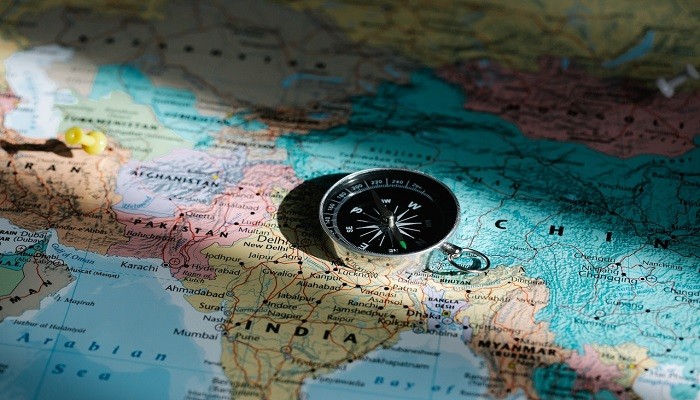
Source: LinkedIn
Maryam Nawaz
The landscape of global politics has undergone a significant transition, as evidenced by the changing nature of great power competition over the past few decades. Following the disintegration of the Soviet Union in the 1990s, the United States emerged as the sole superpower of the world, compelling Francis Fukuyama to introduce the End of History thesis, which spoke to the enduring ascendancy of the Western liberal model across social, economic, and political spheres. However, the world saw new phenomena, including the rise of China as a significant economic power, leading to a reevaluation of traditional Western-centric approaches to global development. China has taken a different route, establishing corridors under the auspices of the Belt and Road Initiative (BRI). As a result, economic interactions are being seen in a geopolitical context. In fact, China’s economic boom is seen as a challenge to Western hegemony. This competitive element can be explained by Stephen Walt’s balance of threat theory, which links alliance behavior to threat perceptions. Therefore, the United States has focused on countering China’s juggernaut through allies and partners.
Often characterized as Cold War 2.0, the Sino-U.S. rivalry has been greatly shaped by concerns about alleged Chinese attempts to disturb a rules-based order through predatory economics. In recent years, the European Union and the U.S. have introduced many alternatives ,such as the Global Gateway and Build Back Better World (B3W), respectively, to counter the influence of China’s BRI. The planned and talked up India-Middle East-Europe Corridor (IMEC) could be seen as an effort to achieve exactly the same. However, for several years, the U.S. relied on creating a debt trap bogey around the BRI so as to dissuade countries from joining the fray. This overemphasis on creating a counter narrative did not deliver the goods for the U.S. Now, IMEC, at least apparently, will try to offer a kind of an alternative. And while its establishment and success are far from certain, the Corridor will appeal to India, Israel, and the Gulf countries. That being said, conflicts like the one in Gaza will become one of the challenges to the Corridor. While IMEC has not taken off yet, it is important to look at some of the impediments it could face in challenging China’s BRI going forward.
BRI draws it strength from the fact that China has become a very integral part of the global economy and supply chains. Aimed at boosting trade and opening up economies, BRI encompasses 150 countries and boasts a staggering $1 trillion budget. In comparison with the massive BRI, the IMEC, for now, appears to be relatively modest. IMEC comprises just eight countries, albeit also including the members of BRI, such as Saudi Arabia, Italy, and UAE. So far, no details have been provided except for announcements to establish a trade corridor from the Indian ports to the ports of UAE and build a railway network from Jordan and Saudi Arabia to Israeli ports on the Mediterranean and then finally to European ports. The detailed plan, including government considerations and commitments regarding taxes and customs among the eight member countries, is set to be finalized by the end of the year. Also, IMEC aims to incentivize new investments, primarily in supply chains, export of clean energy, and food security.
Doing all this will not be easy. For starters, the recent inclusion of countries like Egypt, Saudi Arabia, and Iran in BRICS will complicate things. The emergence of China as a mediator of the Saudi-Iran peace deal, and the adoption of the China-Iran 25-year comprehensive strategic partnership worth $400 billion underscore Beijing’s growing clout in the Middle East. BRICS’ expansion and China’s forays in the Middle East will make it easier for Beijing to promote and beef up BRI. Other than these strategic reasons, the economic feasibility of the project may also not match its political hype. According to some estimates, by using the new route, shipments from Mumbai could reach Europe at a 40 percent faster rate than it could through the Suez Canal, cutting the cost by 30 percent. This sounds quite an exaggeration given the future transit fees and tolls, and loading and unloading costs. Moreover, insufficient, old infrastructure is a major hurdle. While portions of the rail network are still incomplete in the Gulf, the railway system of Jordan also needs to be upgraded. Lastly, financing the project is another issue. As the Corridor relies on private-sector investments, the main sponsors are yet to be revealed. What’s more, the private sector may find the longevity and cost of the project prohibitive. These challenges will be decoupled with other geopolitical shocks that typify the politics of the Middle East.
So, in a period marked by an increasing quest for interdependence and greater Chinese influence, these corridors should be seen not only as platforms for economic connectivity but also as theatres of geopolitical rivalries. The success of IMEC hinges on the demand for global economic recovery. Therefore, it may take decades for the new Corridor to become a force to reckon with. However, in the meantime, the U.S. will continue its efforts to contain and, in some places, topple China.
Maryam Nawaz is a PhD scholar at the School of Integrated Social Sciences, University of Lahore.
The views expressed in this article are the author’s own and do not necessarily reflect those of Pakistan Politico.




